Gas taps: types, main characteristics + selection criteria
All pipes that supply gas to a boiler or stove must have gas valves, which are used to shut off or supply natural fuel to objects. Gas valves also serve to shut off the gas supply if there is a suspicion of a gas leak or other malfunction of the gas appliance.
It is worth noting that ball valves are most often used for such purposes. Although the type of valve is not so important, the main thing is that it is reliable and in good working order. Next, we will talk in detail about the types of gas valves and outline the main criteria for their selection.
The content of the article:
Classification of gas taps
Since childhood, we were taught that we should not joke with gas. Even now, every schoolchild knows the telephone number of the gas service: 104. At school, from early childhood, they explain where to call if the smell of gas is heard in the house.
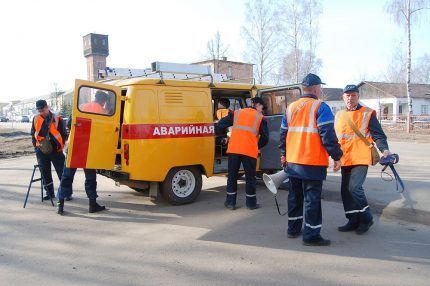
Pipes, valves and other component materials for gas supply must be of special quality. These structural elements must serve a person for at least ten years, and they should be periodically checked and, if necessary, replaced.
However, the owner of the premises will have to purchase gas equipment himself. Choosing it will not be difficult if you study what requirements it must meet. Thus, the main characteristics of gas taps almost all boil down to the reliability of the valves.Dimensions depend on the diameter of the pipe. That is why the diameters of gas taps must match the size of the pipe.
Most often it is 24, 27 mm. Manufacturers produce gas valves and valves; the thread size of gas taps can be of three types. If you look at the product labeling, then according to GOST the following information must be indicated: type of product and type of tap
According to the operating principle
Next, we will consider what types of gas valves there are. Judging by the principle of operation, they can be divided into cork and ball.
Plug gas valves — their operating principle is based on the operation of a cork mechanism. The principle is quite simple: just turn the tap handle and the plug will also turn inside the body. And there is a hollow structure, thanks to which gas can easily pass inside the housing through the pipe to its destination.
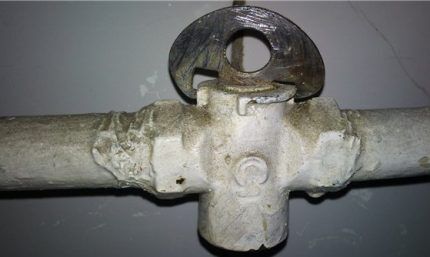
When the valve handle is turned back, there will already be a closed space there and therefore the gas will no longer pass through the obstacle. The only thing is that the valve body and the plug must fit tightly against each other. The role of the sealant is performed by the valve seal.
Ball gas valves They are somewhat different from cork ones in that there is a ball inside, which plays the role of a locking system. If the ball is turned in one direction, gas will pass through the hole in it, thus opening the valve. If in the other direction, then the closed surface will not allow gas flows to pass through. Usually such a ball is made of metal. Moreover, the material used is durable.
The product lasts for a long time and does not require special care for a ball valve, unlike a cork valve, which requires periodic maintenance. Ball structures appeared on the markets not so long ago, but they are especially popular, because they have their own advantages. In particular, the low cost of the product, ease of use, strength and reliability, and long service life.
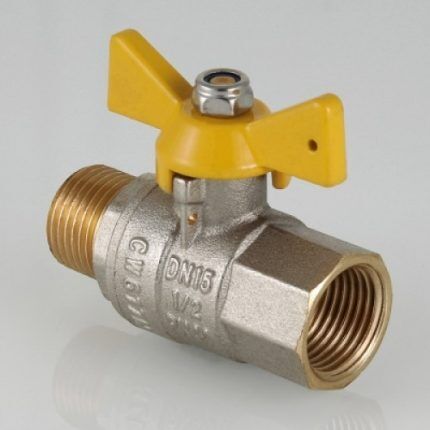
These taps can also be operated at low and high temperatures, more precisely within the range from -55 to +75 degrees Celsius. That is why experts advise using just such gas taps for domestic purposes.
By pipe connection method
If you look at the method of connecting taps to pipes, they can be divided into the following types:
- taps with threaded connection — they are connected to the pipe by scrolling until they make full contact. To prevent gas from poisoning, special gaskets are used;
- flange mounted valves - they are connected with special flanges, which are metal disks, but they are already secured with bolts;
- valves with welded connection method — such locking mechanisms are simply installed using a welding machine, without any threads or flanged auxiliary disks and bolts.
Valves of the first two fastening methods (threaded and flanged) can be used reusable, they can be removed from the pipes and then attached back. But welded mechanisms are used only once; repeated use is impossible.
According to product material
When purchasing a gas tap, it is imperative to pay attention to the material of the product.This is an important component, because the stronger the material from which the locking mechanisms are made, the longer its service life. And for gas pipes, taps must be of the highest quality.
It is from the raw materials from which the taps are made that they got their names. Brass taps, perhaps the most common products on the market.
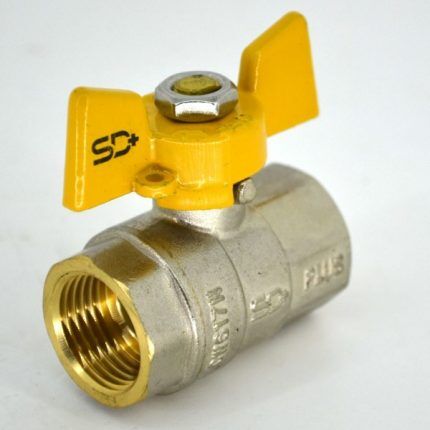
True, these designs also have some disadvantages. If you need a tap for supplying gas to a stove or boiler, then yes, you will find such taps made of this material. For small diameter pipes there is a small selection of products, and not for everyone. Brass also reacts to high temperatures. If you heat the product above 200 °C, then it will no longer be possible to use it. Brass is also not used in the petrochemical industry.
In addition, many manufacturers have recently replaced brass with brittle silumin in order to save money and do not always warn about this, so the buyer should be careful about the products, choosing them in those places where there is no product certification. Silumin taps During repairs, gas may leak due to microcracks; this is unacceptable and unsafe.
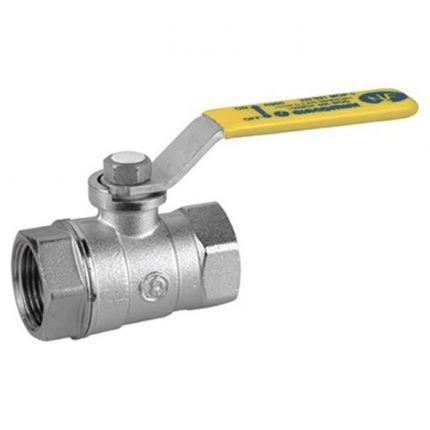
In the USSR they used it more often than others cast iron gas taps. The quality of these products was excellent, but now manufacturers have stopped producing them, because this industry does not stand still, but is developing.New types of steel are appearing, which are not as expensive as cast iron, but have properties similar to it. That’s why they don’t make cast iron mechanisms to control gas supply anymore.
Nowadays, in addition to brass products, you can often find:
- Carbon valves - they have a huge variety of diameters, but they are most often used for water, they are not even suitable for serving mildly aggressive avg. Also, if the temperature is minus forty, then the material loses its properties and is not suitable for use.
- Alloy taps - are quite similar to carbon ones in the type of application, their only difference is that they can withstand temperatures up to - 60 ° C.
- Stainless steel taps - more often used in large industries. They are resistant to different temperature changes, are not afraid of aggressive environments, and do not rust.
Particular attention should be paid to the valve valve. It must be smooth. After all, manufacturers use diamond cutting technologies to reduce friction between parts, thereby minimizing the risk of leaks.
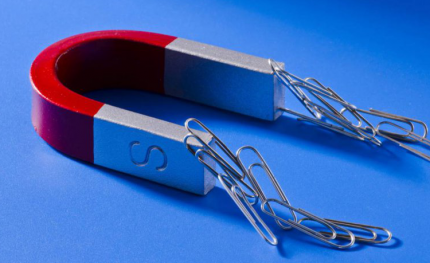
Good quality gas taps are made with brass valves. And on top the material is also coated with nickel or chrome. This extends the life of the locking mechanism. Those taps that are lower in cost are made of metal. It's good when it's new, but over time the metal begins to rust.
Basic criteria for choosing equipment
If there is a question about replacing the gas tap, then doing it yourself is not recommended. Only specialists have the right to engage in such work, and they must have a license for these types of work. Do replacement of gas pipes, cranes yourself are simply unacceptable. You can endanger not only your life, but also the lives of your family and neighbors.
Every homeowner and tenant should know this information. It is the gas workers who carry out periodic inspections of the condition of gas equipment or, in case of problems, the owner of the property calls the emergency gas service. They, in turn, determine what is out of order, and residents buy everything they need to fix the breakdowns. In this case, we will find out what criteria are best for choosing a gas tap.
As previously mentioned, ball valves are popular, although experts in this industry say that plug valves last longer - their service life is about 20 years. They just need to be maintained and occasionally lubricated. But ball ones don’t.

So when choosing, you should pay attention to all the little things, even the appearance of the product and take into account the following circumstances:
- The diameter of the gas valve must match the diameter of the pipe. Of course, valves of smaller or larger diameters are simply not suitable for the job.
- Thread pitch. If you take a threaded locking mechanism, then it must match the thread pitch on the gas pipe. This way you don’t have to buy any adapters that will bulk up the structure.
- Pay attention to the material of the product. Still, for gas it is better to use taps made of brass. This is time-tested material. It will serve you for a long time and without problems.Brass has a yellowish tone and a brass faucet is heavier than various types of steel.
- Look carefully at the appearance. The product must be free of scratches, cracks and chips. There should be no defects either on the surface or inside. Don't hesitate to take a close look at the gas valve; you don't want to change it often. You should also not save on your purchase.
Choose faucets from well-known companies, as these manufacturers take responsibility for their products because they do not want to lose customers. And the reputation of their company is important to them. Such manufacturers include the German company Dungs, an Italian company Bugatti.
Tips for replacing gas taps
In apartments or houses gas communications serve for many years. The only thing is that they require periodic inspections and maintenance (painting of pipes). The most vulnerable parts of such structures are gas valves. Of course, they are used several times a day, or even more. It is due to heavy loads that gas valves break. Breakdowns of gas taps made from low-quality raw materials occur especially often. Plastic products break down faster than others.
Not everyone knows when the faucet needs to be replaced. The answer is simple - when you smell an unpleasant aroma characteristic of gas, you need to check where the smell is richest. If the leak is in the gas valve area, then it should be replaced.
Inspect the product, you may notice cracks or other damage on it. Maybe the faucet turns tightly or, on the contrary, turns too freely, then we can safely say that the device is out of order. But you cannot replace the locking device yourself. Don't tempt fate - call a gas service worker.
It's free for you will replace the gas valve, your only task is to buy the right mechanism that will fit your gas pipes and will last for many years. We described the selection rules above.

If there is a need to change the device, do the following:
- First, dial the number of the gas utility and report your problem to the dispatcher.
- Buy a suitable faucet, take into account the diameter of the pipes, thread pitch, and other nuances. Don't choose the cheapest product.
- Prepare documentation for gas specialists. Most likely you will need: a technical passport, gas supply documentation.
- When the employee arrives, he will ask you to light the burner and close the valve that controls the gas supply. This will allow the fuel to come out of the pipe.
- All work on replacing or repairing gas equipment must be carried out in a well-ventilated area.
- The technician will replace the tap and check its operation, and he must also check for gas leaks.
- When the repair of gas communications is completed, the specialist will ask for a technical passport and make a record of the work done.
A natural fuel leak is detected by using soap foam. Foam is applied to the joints and faucet, and then the foam is carefully monitored. If there is a gas leak, bubbles begin to form in this area.
Conclusions and useful video on the topic
As you can see, choosing and replacing a gas valve is not such a difficult job. And in order not to expose yourself and your neighbors to danger, you should treat the process responsibly.Even such a small detail as a tap for gas pipes in an apartment plays an important role in general gas communications.
How to choose a high-quality gas valve will be discussed in the following video:
Please tell other visitors to our site whether you have ever had to deal with choosing and replacing gas valves. Perhaps there are subtleties that we did not mention in this material? Leave your comments, share your experience, ask questions - the contact block is located under the article.




Cylinder on the street, heater at home. There is no tap on the heater (I turn it off with the tap on the cylinder). Connection with a 9 mm hose. I want to install a faucet in the house so I don’t have to run outside. Is there a tap for the hose break (with outlets for clamps), or only fittings with a 1/2 transition and a tap for them?